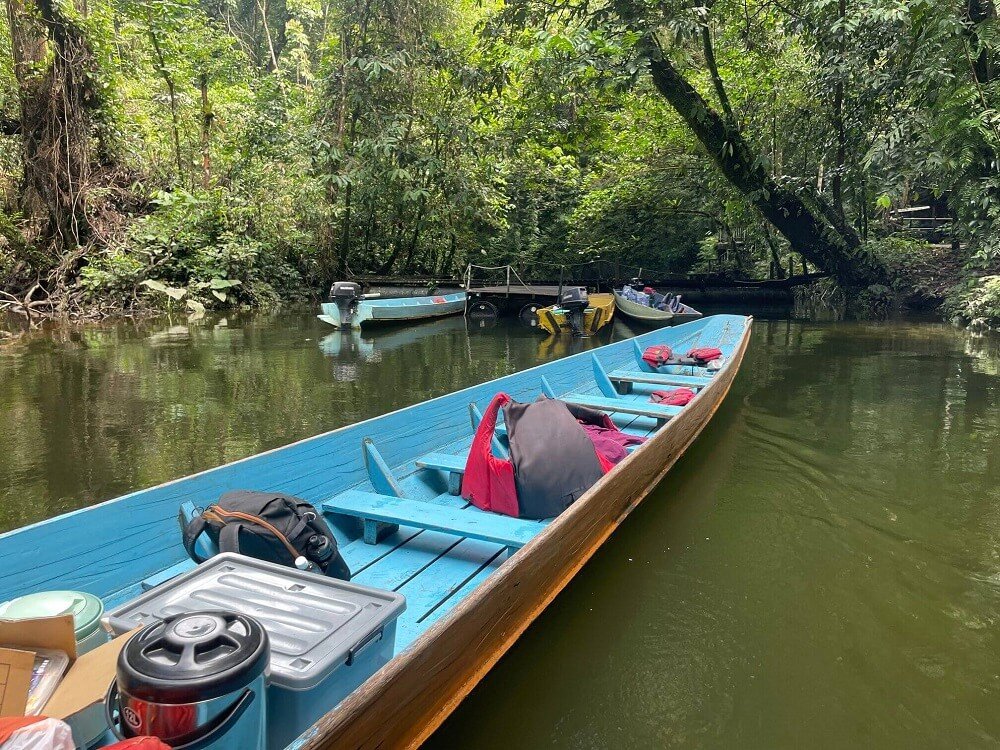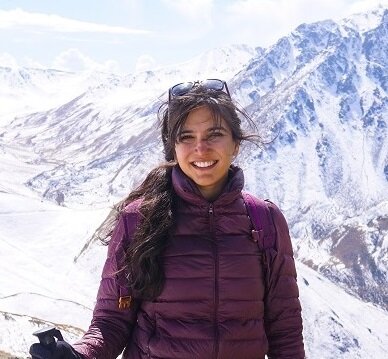Hiking Mulu Pinnacles: The Complete Guide To Trekking These Tough Peaks
/On a whim, driven by my desire to explore Malaysia's diverse landscapes, I made the spontaneous decision to embark on the challenging trek to the Mulu Pinnacles, accompanied by a group of adventurous friends.
The jagged peaks in a remote part of Borneo made it all that enticing and it was also a chance to get up and close with Malaysia’s rainforest which I knew very little about.
You could say that this is the ‘Amazon of Borneo’, but respectfully I wish to put it out there that Borneo stands tall on its own as one of the most biodiverse places in the planet.
I mean you have trees that reach up to 60 to 80m in height known as the Dipterocarps and on the other hand we are able to witness one of the largest caves and karst ecosystems in this world.
Add to that the hike to the Mulu Pinnacles — it was one Indiana Jones kind of adventure. It is also very different in terms of terrain and difficulty when compared to Mount Kinabalu, the obvious and more popular one.
I’ll be honest I trek frequently but I totally underestimated what the humidity and the kind of resilience and hardy trekker one needs to be on a trek like the Mulu Pinnacles.
Disclosure: Some of the links below are affiliate links. I only provide unbiased and completely honest recommendations. Read more about the site’s privacy policy.
The Mulu Pinnacles: How Difficult it is?
the mulu pinnacles Hike: a snapshot of how jagged these karst formations look like
🥾 You can book the Mulu Pinnacles hike here
Located in the heart of Mulu National Park, the Pinnacles are a series of 45m high jagged peaks made from stark karst formations. The trail is about 2.4km in length and ascends up to 1,200 metres in altitude.
It’s a one-day trek to the Pinnacles and takes 3 days and 2 nights to complete as you start the trek by undertaking a 9km trek with all your belongings to Camp 5.
In total, we did the 5 days and 4 nights option where it includes exploring Mulu National Park in detail and witnessing some of the most glorious cave systems. A particular highlight: the bat exodus where atleast 2 million bats weave out of the deer caves in search of food for the night.
Starting With The Flight
Flight operated by mas wings to mulu national park
a view of mesilau river from the plane
We flew from Kuala Lumpur to Miri with Malaysian Airlines and stopped for a day in Miri town. From there we took a small plane operated by Mas Wings towards Mulu National Park.
It was a twin propeller and a small-sized plane due to the short runway at Mulu airport. The ride was only 30 minutes long and it felt like we were cut-off from the rest of the world!
The bird’s eye view of the Melinau river snaking through the jungle and forest of Sarawak felt like we were entering the Amazon jungles.
You kinda also get a sense of what you’re signing up for!
Day 1: Staying at Benarat Lodge | Visiting the Deer & Lang Cave
staying at benarat lodge - a very simple lodge at mulu national park
our pick-up truck from the airport to benarat lodge
Arriving at the Mulu National Park airport felt like a quick hop and drop away from Sarawak yet we were totally cut off and were surrounded by these vast mountains.
Our stay was at the Benarat Lodge next to the river and while the rooms were basic and nothing to shout about, it was OK for a one night here before we headed to Camp 5 and other spots around Mulu National Park.
Every group is accompanied by a park ranger and our first visit we were taken to the Deer Cave and Lang Caves.
To reach the Deer Cave, we embarked on a scenic 3km walk boardwalk which takes you through some of the peat swamp and jungle streams where you’ll be able to spot the Dipterocarp trees and chameleons.
Our first cave called the Deer Cave is just over 2 kilometers in length but it was a whopping 90 metres high and wide. This is the area where deers used to shelter and that’s how the Penan and Berawan people named it Gua Rusa (Deer Cave).
The path eventually leads to the “Garden of Eden” where a hole in the cave roof lets in a shaft of light which allows the rich green vegetation to thrive. Another feature is the famous profile of Abraham Lincoln, which guards the southern entrance of the cave.
the bat exodus at mulu national park
For us the highlight was waiting for the 5pm to 7pm window where we will be able to witness millions of wrinkle-lipped bats as they’re released into the night to hunt for insects.
This makes the forest clean and devoid of any mosquite-borne diseases which is pretty amazing. It was a mesmerising sight as hordes of them got released in batches despite the downpour.
On our continuation from Deer Caves to the Lang Caves, it was impressive to see how each was strategically positioned to highlight all the various stalactites and stalagmites. What’s particularly impressive is that the ones in Borneo grew over the course of 100,000 years!
With the humidity at an all time high, it kinda felt like we were in the freezer of an ice cream cake factory while gawking at these fascinating formations.
Day 2: Heading to Wind & Clearwater Cave | 9km trek to Camp 5
some of the many caves at mulu national park
A journey deep into the Mulu forest and it starts with a trip on these long-boats as we head towards the Clearwater cave.
It was also a resting ground for those who wish to swim in the rivers, but the entrance to these massive caves requires climbing 200 steps. It is also Asia’s longest cave measuring 107m.
The emerald waters and just how extensive these interconnnected cave systems are.
It would also be a good time to brush up on your Geology knowledge if you’ve no idea how these are formed!
There are lights and boardwalks everywhere making it quite the easy walk to explore these caves. There’s an air of mystery around these caves and formations and you can’t help but wonder how all of them were formed.
Wind Cave is actually connected to Clearwater Cave and considered part of the same system, but is entered by a separate nearby entrance. It has about 350 meters of well-maintained trails.
Starting the 9km trek
our longboat towards the kuala litut jetty
After a lot of cave watching, it was time to continue our hour long boat journey to the starting point of the trek at Kuala Litut jetty.
The afternoon heat was scorching and thankfully a flat walk under shaded trees: but the idea of walking for 9km after having lunch made us quite lazy.
We sprayed all the bug spray needed as we were told the constant rain in the past few days could also mean leeches.
There were a few rickety swing bridges that looked very sketchy and required one person at a time.
Reaching Camp 5
camp 5 at mulu national park
After 3 hours we reached Camp 5, and it was such a relief to take off our backpack and see the grounds of where we’ll be staying put for the night.
We were amazed how clean Camp 5 facilities are. Our backpack had all the essentials we needed, and we didn’t need to carry a sleeping bag as we were given a sleeping mat, and would only need to rent a blanket for RM10, pillow RM5 and mosquito net RM10.
The hut could accommodate up to 30 people at a time and we had access to a kitchen, squeaky clean toilets and a shower.
the clear rivers at mulu national park
The next few hours spent chilling at the Melinau river and gazing at the mountains while wondering what could be for dinner? Dinner was a decent spread of veggies and chicken but I always felt like it wasn’t enough or I was too ravenous.
Before our trek began, our guide gave us a full brief, preparing us for the possibility of rain during our journey. If it rains, this trek is officially cancelled as it becomes too risky to climb the Mulu Pinnacles.
Despite our pre-hike nerves, he mentioned during this trek that words of encouragement like 'You can do it’ should not be practiced.
In fact, it should be avoided all together as there’s no guarantee everyone is fit enough to descend.
With that, we called it a night and slept early hoping for the best.
Also Read: Kolsai Lake, Kaindy Lake and Saty: A Travel Guide To Kazakhstan’s Lakes & Sunken Forest
Day 3: The Mulu Pinnacles Trek
At 5am, I wake up anxiety-ridden worried I may have missed the departure time.
The clouds cleared, the rain stopped and we were all prepping to take only what we needed for this tough 2.4km ascent. With our headlamps, we walked through flat grounds until the terrain completely changed.
It was straight-up rock climbing like how all Malaysian jungles are except this was a 45-degree ascent that would go on non-stop until we reach the first pit stop.
It was super humid and we were all struggling at the beginning while climbing upwards in the dark. Nobody really waits for you and to avoid too many breaks, everyone was just at a go-go-go speed.
The humidity was sapping my energy and some of us needed more breaks than usual. We had three stops until we reached the Pinnacles of which the last bit being the most dangerous of the lot with the 17 ladders.
My legs were already on fire and I was feeling rather lightheaded.
the mulu pinnacles trek: on our way to the pinnacles
reaching the mini mulu pinnacles
At the first stop, the mini Mulu Pinnacles (900m) we all took our time to spot the pygmy squirrels, listen to the sounds of woodpeckers, insects and other buzzing insects while scanning the heavens above to check if there’s any sign of rain.
It looked particularly gloomy and cloudy — somehow I didn’t have a great gut feeling and was feeling ill as I wanted more time. Before I knew it, my guide and group were already leaving.
Timing is super particular over here and if you’re running behind time they’re super rigid due to how treacherous the mountains are. If you don’t make it before dark, a search party will be sent out, and cost each climber USD$43 (RM200) per hour.
But somehow we were not in the best of health and three of us decided to head down.
Climbing the 17 ladders
the starting point of the 17 ladders towards the mulu pinnacles
scrambling up towards the pinnacles
From there on, it turns into a complete danger zone with warnings and signs indicating that terrain has turned risky. If you’re afraid of heights and are not so surefooted, the Mulu Pinnacles is not the place to get over your fear.
Some turned around and didn’t complete the ladder part because they were so drained — and some went on to do it no matter what.
After the mini pinnacles, the terrain becomes steeper until you reached the ladders and metal crossings that were in between boulders. In fact, this could be likened to the tropical version of the Hilary Step in Everest — the death zone where most people do not succeed.
It takes a certain kind of motivation and struggle to override that voice in your head and I found it hard to switch this off this time (atleast for me!)
Reaching Mulu Pinnacles
some of us who reached the top of mulu pinnacles
These are pictures and some footage taken from the three people who made it to the top. The Pinnacles are the most ethereal giants and pin-like needles that jut out to the sky.
The 45-metre high mountains against the backdrop of Gunung Benarat are a sight to behold.
These mountains are not just any mountains but they were formed millions of years ago by the gradual erosion of limestone and now look like thorns shooting up to the sky, leaving behind stunning, unique arrays of rock formations.
I could wax lyrical about these giants eventhough I didn’t even reach the top. But based on my friend’s description, and their bruised arms and calves, “You have to look straight up and down continuously to just admire these pinnacles!”
Most of them stayed back for 30 or 60 minutes before making the longest trek back to base camp which was arduous. It required focus, a lot of self-talk and determination to make it back after 12 hours.
Chilling at Camp 5
the idyllic surroundings of camp 5
a green crested lizard and one of the many chameleons at mulu national park
Those who didn’t make it spent the entire afternoon spotting chameleons, dipping in the cool river and also going on night walks to spot more insects.
There were tons to do but we mostly talked about the hike, the difficulty and how some who were in their 60s were able to do it.
One guy also mentioned that Kilimanjaro is a walk in a park compared to this. The rest were like ‘thank god you didn’t do it’ because it is not that simple.
Mulu National Park does attract a lot of older folk; we met lots of people in their 60s from Austria to Poland who were coming here all the way to spend time at the park. Maybe it is a bit expensive, and not the usual trail for those on their backpacking budget-friendly route.
Day 4: 9km trek back + stay at Marriott Hotel
The last day required us backtracking to where we started from. We began the 9km trek back and were sent to Marriott Hotel.
Who knew there would be such a luxurious hotel in this national park? It was much-needed after days of roughing it out.
The boardwalks to the hotel rooms and the sounds of nature were stunning but at night it was a bit creepy. Insects that looked like a hybrid of a lizard and cockroach, and all sorts of creepy crawlies that I have not seen in my life!
How To Hike The Mulu Pinnacles
a group picture of at mulu national park
Hiking DIY (The Cheapest): You could totally do the hike a DIY style where you email Mulu National Park and they sort out the guide for the trek only for RM450 but this means sorting everything on your own from meals to flights and the trip excursion to the caves and even booking a spot at Camp 5 which can be hard to secure if you book last minute.
Tour Option: You can book a tour here. The company we went with was a sister company of Amazing Borneo and he was not the best guide. This is a high-risk activity and in my opinion that should be one guide per group or two for bigger ones where there are 7 of us.
If you do decide to go with this company, make sure you iron out the details on who your guide is before joining one and being extra particular about having a guide with you at the tricky sections.
Our total cost for 5 days and 4 nights including the Marriott Hotel, the flights to Mulu National Park and meals were RM1,989 per person. It is definitely way cheaper than Mount Kinabalu but far more extreme terrain-wise!
Also Read: 17 Offbeat Borneo Places To Visit + Itinerary: Sabah, Sarawak, Brunei & Kalimantan
Other Hikes/Options Worth Exploring
3 Days Headhunters Trail: If you’re looking for an offbeat trail, the headhunter trail could be an interesting one. The trail itself follows the route taken by Kayan headhunting parties who paddled up and trekked to where they launched headhunting raids against the people of the Limbang area.
3 Day Adventure in Mulu National Park (without the Mulu Pinnacles Hike): Explore the caves and stay in one of the lodges to experience Mulu National Park without the hard hike.
Also Read: Semporna + Tawau Itinerary: Island Hopping in Sabah's Borneo East Coast Islands
What To Bring for This Hike
Two backpacks for this trip (a 40litre and a 20-25litre backpack for the trek)
Hiking shoes with grip like the Salomon Women’s X Ultra 4 GTX
Slippers/Sandals
Gloves (covered)
Power Bank: there is no electrical plugs or socket in Camp 5
Three set of clothes: For the hike + and sleeping + swimming clothes
3 litres of water
Cash to purchase some snacks and rent blanket, mosquito net and pillow at Camp 5.
Energy Bars and your own snacks
Tell me in the comments below if you’d do this hike?
Like this story? PIN IT!























